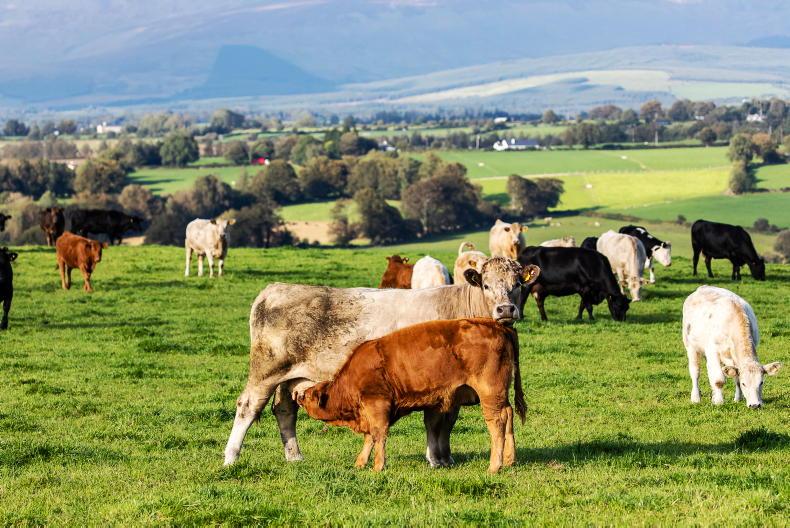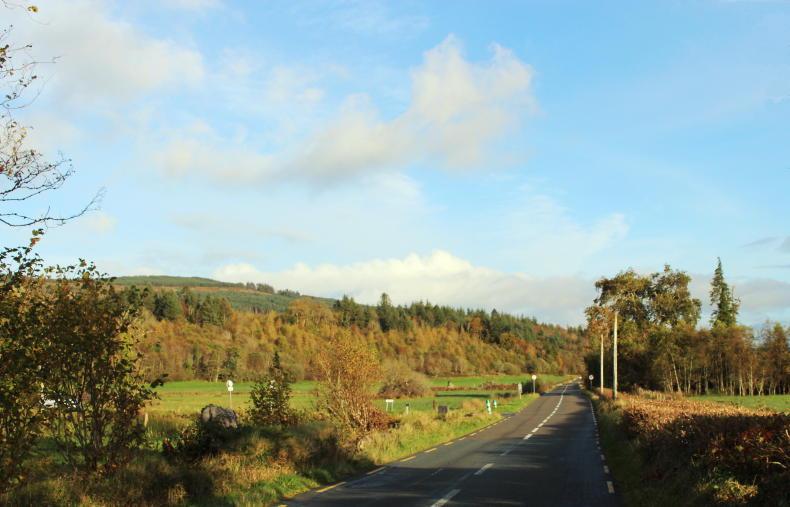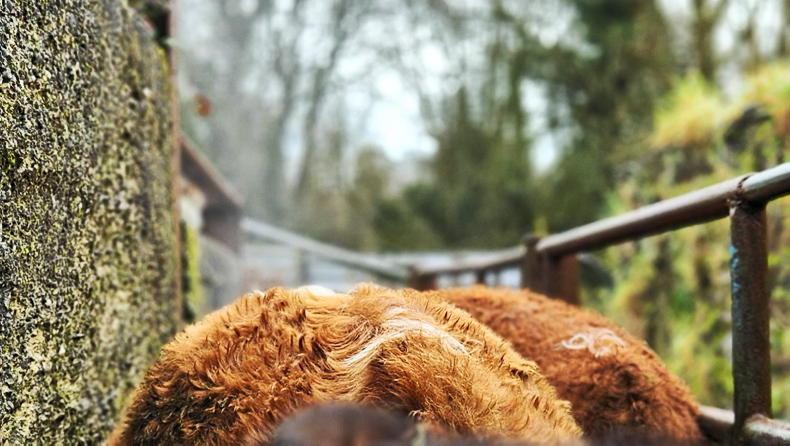This week’s publication of the Food Vision beef and sheep report heralds a significant turning point in the future of the Irish suckler herd.
It has been feared for some time now that the 'struggling' suckler cow would be sacrificed for the more profitable dairy cow.
When you look at the figures, nobody can argue the massive difference in economic output and profit between a suckler cow and dairy cow. In doing so, they have paved a way for dairy herd growth over the next eight years up to 2030.
Incentivising a reduction in suckler cow numbers during this period will be central to this plan working. Irish agriculture cannot meet its greenhouse gas emissions reductions targets without reducing animal numbers by 2030.
Reduction is possible
The report clearly states that without any reductions in animal numbers and with adoption of current and new technology, we could potentially reduce greenhouse gas emissions.
It states that a 4.28 mega tonne (Mt) reduction in emissions is possible with no animal numbers reducing, but this will fall short of the target by 1.47Mt.
The 4.28Mt reduction also assumes 100% adoption of a technology such as two-year-old calving, something that won’t happen without a financial incentive to do so as part of a suckler scheme.
FAPRI analysis shows that the suckler herd is contracting at 3% annually and will continue to do so over the next 10 years to likely hit just over 600,000 suckler cows by 2031.
If this group aren’t looking at the economic impact, then who is?
During the same period, dairy cows numbers are forecasted to grow by 120,000 to 1.71 million cows by 2030.
This analysis doesn’t include the effect of any of the proposed measures in the Food Vision report and the adoption of measures 8 (suckler reduction scheme) and measure 9 (suckler exit scheme), which would see some herds culled and others reduced, that would likely greatly accelerate this decline, which I believe could see suckler cow numbers drop to under 400,000 cows by the end of 2030.
Ludicrous
It’s ludicrous to think that the current proposals have been drafted without an economic assessment carried out and to proceed with the current proposals in the climate action plan shows a complete disregard for rural Ireland and everything it stands for.
It’s downright reckless and irresponsible. The current group have stated that it was outside their remit to look at the implications to the sector and they were tasked with solely looking at how the targets could be met.
If this group aren’t looking at the economic impact, then who is?
Food Vision group
Two of the most talked about measures in the Food Vision report have been the suckler reduction scheme and the suckler exit scheme.
The reduction scheme outlines an income forgone figure of €1,350 per suckler cow over a number of years. The exit scheme mentions an income foregone figure of €1,080 per cow.
There is no incentive payment mentioned, but one would have to be included to incentivise farmers to participate in the scheme.
It should be stressed that the scheme will be voluntary and it may suit some farmers who are near retirement and just want to ease back. The scheme may work alongside an organic conversion.
Devil in the detail
The devil will be in the detail here as to what the incentive payment emerges to be. The exit scheme is the more drastic herd culling option.
This option would see the total suckler herd culled on the farm. Stock can still be grazed on the farm, but no breeding animals are allowed on the holding.
A more drastic option compared with the reduction scheme, it may suit older farmers who wish to operate a simpler system of grazing store animals or look at other alternative enterprises such as forestry.
The tax implications are big with this one, in that if 20 suckler cows were sold at €2,000/head in one year, does that mean the farmer is taxed on the €40,000 sale or could another five-year arrangement be put in place.
No matter the level of uptake, both measures will lead to fewer suckler cows. The document's distinct lack of detail around both proposals leaves a lot to be desired and adds to the confusion around what farmers are supposed to do to meet the climate change targets.
Impact assessment
It’s not acceptable to suckler farmers to produce a report with absolutely no foresight of the financial incentive that farmers will be paid to either reduce suckler cow numbers on their farm or cull their herd completely.
The report also doesn’t outline how the two income forgone figures have been arrived at or what incentive will be included to reduce numbers or cull their herd.
It’s almost like a political form of kite flying. Drip feed a small amount of information out, gauge the reaction and then make a decision to proceed or not based on the reaction.
MII comments
Interestingly, Meat Industry Ireland (MII) has come out very strongly, urging caution on the proposed plan to cull the Irish suckler herd.
It estimates that the current proposed policy would see 14,500 farmers exiting the sector, 6,500 job losses and a beef export loss of €700m in value annually.
It is one of the only organisations to put impact figures on the proposals.
Farm organisations
Farm organisations are now caught in a difficult position. They have engaged with the group up to now to get the report to this stage, but many have indicated that they won’t be supporting the publication of the report.
The INHFA has walked out of the process and will have little sway on any changes to the report while standing outside the room.
For the rest, it’s a matter of looking for more detail before any decision can be made on its approval. The details need to come fast though, as Eamon Ryan’s climate action plan is due to be published next week.
One would assume that when Minister for Agriculture Charlie McConalogue is challenged next week in relation to the report, he will argue that he has engaged with farm organisations in the process and liaised with them on proposed plans, but if nobody agrees with the proposals, does he proceed with the plan to be included in Ireland’s climate action plan or does he try to bring the farm organisations with him.
Without farmers and farm organisations believing and adopting proposals, it goes nowhere and is a meaningless report, which will be used as cover if and when the cull commences.
The future
The future for the Irish suckler cow currently looks very uncertain, with almost all current policy decisions being taken with a view to a reduced national suckler herd.
The policy decisions are being taken with a view to meeting our ambitious climate change targets in 2030.
Climate change is real - everybody needs to do their fair share to meet our target. Looking at the current proposals, the word fair doesn’t seem to register with any of our policy makers.
To proceed with the current proposals without even a desktop study on the likely economic impact to rural Ireland is reckless and irresponsible.
If the Minister accepts the findings and proposals of the group as it is, this shows complete disregard for rural Ireland and smacks of a Minister and Government completely out of touch with the challenges for the sector that lie ahead.
Climate change is real and changes are needed. Farmers are well positioned to change and with support I have no doubt would rise up to the challenge.
It’s whether the current Government and farm organisations are willing to stand up, support and fight for suckler farmers is the real question.









SHARING OPTIONS